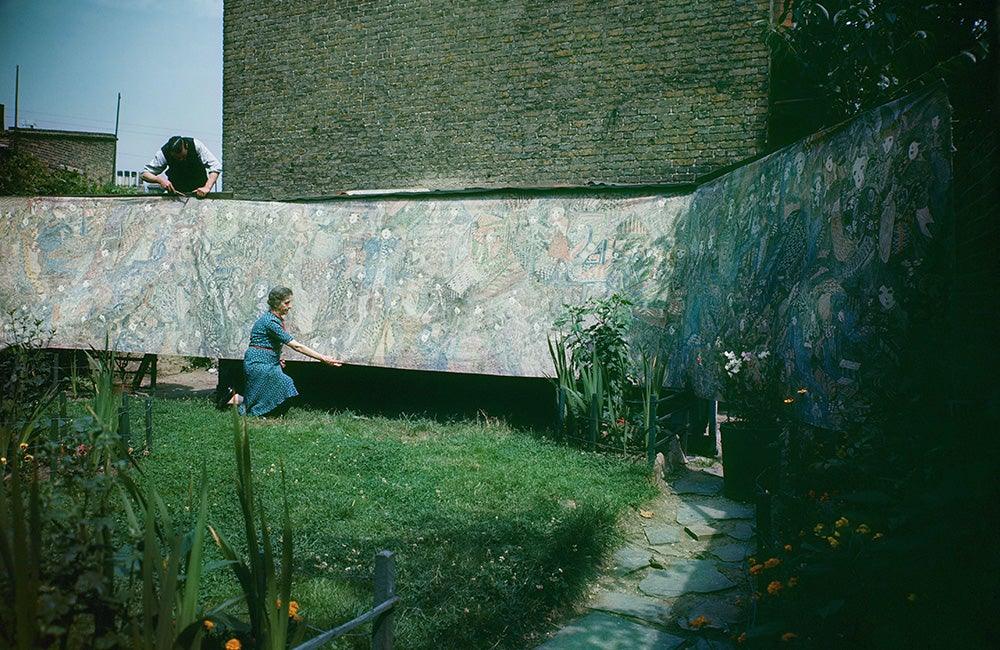First published: Fall 2015
I first encountered Madge Gill in the East End Star of January 1940 while looking up something quite other. A few lines, describing what otherwise sounded possibly a rather humdrum local exhibition, jumped out as denoting something certainly “other”, and quite extraordinary.

Veiled face with lines expelling from the mouth, undated, black ink on board, 19.6 x 24 ins., 49.5 x 61.5 cm, courtesy London Borough of Newham, 2012.962
A Housewife to Artist
A hundred and twenty feet of cotton cloth at a few pence a yard covered with minute drawings of women’s faces in Indian inks, was the most important work shown in the eighth Autumn Exhibition of the East End Academy which opened last month at Whitechapel Art Gallery.
It fills an entire wall of the gallery, and gives the impression of a subtly woven tapestry. The artist, Mrs Madge. Gill, is a middle-aged East End housewife, who has steadily refused to sell her work in spite of remarkable offers.
Hang on, I thought; “a hundred and twenty feet of minute drawings”? I could not think of any precedent in 1939 (the exhibition ran from November 6 to December 22) for what Gill appeared to be up to. Back then, few artists were working on such a scale: Jackson Pollock (1912–1956) sprang immediately to mind, but his larger works did not get going in earnest until around 1943, the time of his one-man show at Peggy Guggenheim’s gallery.

In 1958, two years after his untimely death, the Whitechapel Gallery staged Pollock’s first UK exhibition (“Jack the Dripper” was Time’s moniker the year he died). In January 1939, the same year Gill exhibited her 120-foot drawings (the exhibition ran from November 6 to December 22), Picasso’s Guernica was shown at the Whitechapel, a 25-foot monster of expressive force. Had Gill seen it? Perhaps. But, I later learned, by then she had been working in her own singular expressive fashion for nearly two decades.
Unlike Pollock or Picasso, Gill worked on a grand scale but minutely, in her bedroom or drawing room, on a roll-to-roll contraption rigged up by her son. According to John Duddington, the Whitechapel’s then-director, she was only able to see her new work in its entirety at exhibition. This is because she works in her small room at home, and to be able to handle such masses of material, is forced to draw bit by bit, winding up the cloth on a roll.
This is an article extract; read the full article in Raw Vision #87




